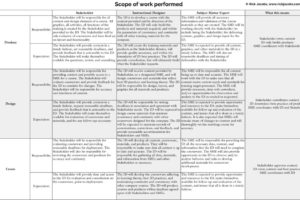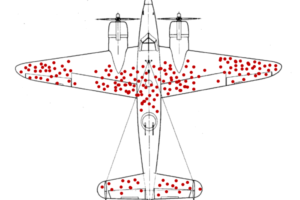I’ve been training for most of my adult life. Whether firearms, law enforcement, graphic design, technology, photography – I have trained a lot. I have also researched a lot of what to train in each of those fields. That might seem counter-intuitive, but if you are new to the training development (instructional design, learning architect, etc.) industry, what to train is the key to anything you create. You might be able to make beautiful slide decks and info graphics, but that isn’t training. It is the content and the assessed transfer of knowledge that makes a media presentation training. But that’s a different post.
The question I would ask myself is what is it about the topic I am developing that makes the difference between training and neat information? How do we know what the content should be, where do we get the information that explains a process or instills a skill that makes an activity training?
One of the take-aways I first had when I started getting into developing teaching in the graphic design world is that I needed to develop skillsets. That’s one difference between education and training – what is the intended result. I was teaching graphic design software courses for a career college when it dawned on me that I can teach/train anything except one thing – talent. People either have it or they don’t.
Lately this has been nagging at me. I have been reading a lot recently on how employees are divided into performance groups. There are many systems out there, but I also noticed something that has given me the epiphany for this article. All of these performance metrics do not take into account talent. Many include attendance, conformance, meeting certain metrics, and then divide them into groups based on their behavior as employees, not based on their behavior performing tasks. This really got me thinking about what groupings we analyze to establish the baseline of what are good practices and necessary skillsets. This was further refined by my discovery of Thalheimer’s Learning Transfer Evaluation Model (LTEM). (This model is disruptive to learning development, check it out.)
This idea started because of my experience in call-centers for the last several years and my reevaluation of how law enforcement training is developed. Often, businesses want us to take their top performers and have us develop training based on what those people are doing. I had an intuition there is something wrong with this. I believe I am right about this.
Now, this is going to sound radical, maybe, and I am sure there will be some push back, but I am going to say it: training should NOT be based on top performers. They should be based on something completely different. To me, using top performers as your baseline of performance for developing training is akin to developing all math classes using Einstein as your sample.
Top performers are outliers. They are aberrations. In a company of 100 people doing the same role, you will have a bell curve of performance. If we developed all of our training on what the business metric says is a top performer, we are basing it on people that most likely have a talent that is not innate to others. You are skewing your trainees to failure. You can’t teach talent.
So, what would I use? Well, I do have ideas, but first and foremost, I would not be using any business compensation metric, grading system, Nine Box, or what have you. They account for things that do not matter for how well a task is performed. They are jamming the data with ancillary information and detritus that has nothing to do with skill. As LTEM points out, training is not accomplished by attendance, participation, or perception. Training success should be measured on making right and correct decisions, so should the evaluation of who establishes the baseline of training.
To be clear, I am saying training shouldn’t be based on top performers, it should be based on the grinders. The people that do a good job, make few mistakes, churn with results even if the results aren’t extraordinary. A business isn’t successful on the backs of a few top performers, it is stable on the backs of the top of the bell curve workers who know how to do the job but are unsung heroes. They are the ones making good decisions, successfully accomplishing their goals, and moving the company along. We should be looking at them – the people that are demonstrating developed skills and knowledge, and making good decisions.
I am going to start experimenting with how I can find these people. Sure, we want to know what the top performers are doing, but that is more informative than determinative. I want to know what all of the others are doing, who have been performing in their jobs comfortably and with stability. Afterall, training should be establishing the baseline for all employee performance, something attainable for the broadest capabilities that employees come to work with.
I still have some work developing a process for how we identify these workers and organize them. In the meantime, maybe this can start a conversation in the community that can lead all of us to a new paradigm for who we analyze for successful training.






Leave a Reply
Your email is safe with us.
You must be logged in to post a comment.